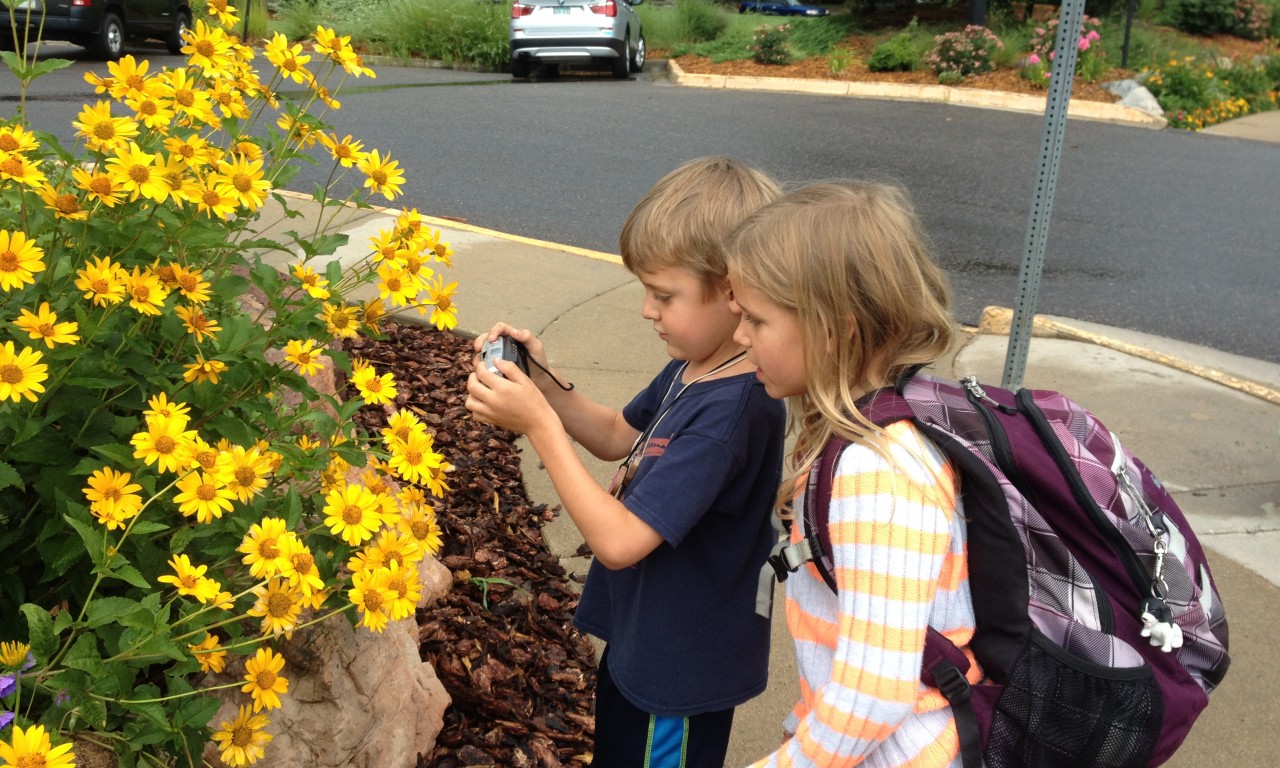The current generation of kids seems more technology driven than any generation prior, and appear at times glued to their televisions, smartphones, iPods, laptops, and/or tablet computers. According to a recent Kaiser Family Foundation study, eight to 18-year-olds spend on average 49 minutes per day on their mobile devices playing games, listening to music and watching TV. To boot, they spend, on average, one hour and 35 minutes sending and receiving text messages. These numbers give the impression that youth are missing what is happening around them in the natural world, but fortunately for us, all is not lost! There are many ways we can effectively utilize mobile technology to supplement outdoor experiences.
Aliens, Planets & Missions
App developers have worked tirelessly over the past few years to produce user-friendly, informative applications that bring technology into the world of our parks. For example, the app “Plum’s Photo Hunt” is designed to engage kids in an interactive story that incorporates many real-world elements. The game follows Plum, an alien from the Planet Blorb, who sends kids on outdoor missions to photograph things like weather, plants, animals, and bugs. This is a great way to get youngsters motivated to go explore the world around them with a fictional story to supplement their experience. Another fun app that appeals to the whole family is “Project Noah.” The mission, as stated on projectnoah.org, is “… to explore and document wildlife and [provide] a platform to harness the power of citizen scientists everywhere.” You can also join missions to help a specific cause or ecological region of the world, such as Rocky Mountain Wildlife Watch. To contribute to this mission, Project Noah asks that you photograph plant and animal life from the highest mountain peaks to the lowest river valleys. This helps wildlife biologists, plant ecologists, and other specialized disciplines monitor natural resources through all of our help. The activity is a great way to introduce the idea(s) of scientific inquiry to the younger generation.
Useful for All Ages
Technology-driven environmental education can bring about positive outcome. The applications mentioned above are just a few of the ways technology can work in tandem with the great outdoors to educate and inform our younger generation. With that said, it is not uncommon to see people of all ages on their devices, sharing their endeavors and journeys with others via social media. On various travel web pages, there are sections where individuals can post trail condition reports and inquiring minds can research up-to-date information regarding a planned outing. Some websites even go so far as to post cell coverage information. For example, if you are planning a backpacking trip this weekend, you can research how the trail looks, where muddy sections may exist, a fairly accurate (by Colorado standards) weather report, and if you will have cell phone coverage based on your service provider! It seems that no end exists to the possibilities technology can provide.
Screen Time & “Green” Time
The question is: in an age ripe with technology, is there any place for good old-fashioned aimless wandering? The kind of day where you pack a lunch, leave technology at home and maybe bring a bird/scat/flower field guide to supplement the experience. Of course there is! Seeing something for the first time in the great outdoors without prior knowledge of its existence is rare these days and an experience that should be cherished. The old saying “everything in moderation” applies to nutritional choices, exercise regimens, television time and now in the last 10 years, mobile phone usage. Just as kids have time designated as “screen time,” we can all, adults included, use a little unobstructed green time. The famed naturalist, forester and environmental activist John Muir once said “The mountains are calling and I must go,” and I could not agree more.


